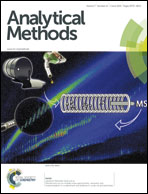An optical-fiber sensor based on time-gated fluorescence for detecting water content in organic solvents
Abstract
In this paper, the authors proposed an optical-fiber sensor based on time-gated fluorescence with high sensitivity for water content determination in organic solvents, and a type of europium ion fluorescent chelate (EIFC) with a long fluorescence lifetime was synthesized and used as the fluorescent indicator. Covalent immobilization was used to solve the problem caused by the leakage of fluorescent dye during the fabrication process of the proposed sensor. The EIFC was photo-copolymerized with 2-hydroxy-2-methyl-1-phenyl-1-propanone, triethylene glycol dimethacrylate, acrylamide, and (2-hydroxyethyl)methacrylate on a silanized glass slide, yielding the optode membrane. With increasing water content in the organic solvents, the time-gated fluorescence intensity of the optode membrane decreased obviously. The time-gated fluorescence intensity of the optode membrane changed as a linear function of the water content. For ethanol and acetonitrile this change was in the range of 0.20–10.0% (v/v), and for 1,4-dioxane it was in the range of 0.20–4.0% (v/v). The limits of detection were 0.031%, 0.016%, and 0.012% for ethanol, acetonitrile, and 1,4-dioxane, respectively. The optical-fiber sensor exhibited satisfactory reproducibility, reversibility, response times, and practicability. The lifetime of the prepared optode membrane was at least one month.


 Please wait while we load your content...
Please wait while we load your content...